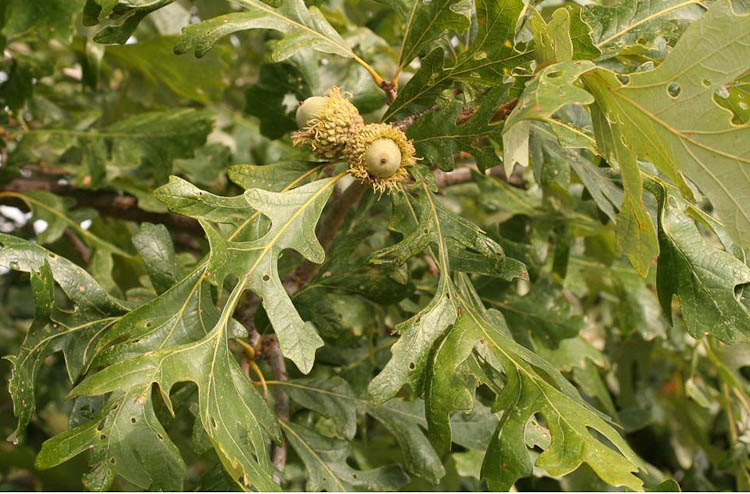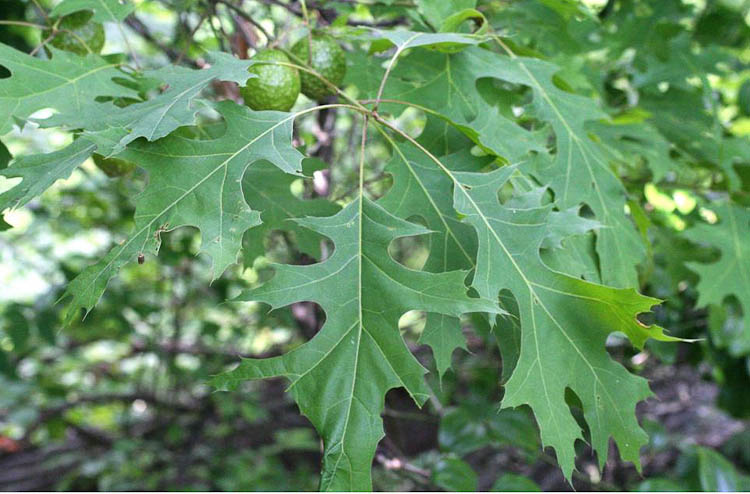white oak (Quercus alba)
Fagaceae, the beech family
How to recognize white oak. All our oaks save one (shingle oak, which has cherry-like leaves) have lobed leaves that are alternately arranged. The upper internodes are very short though, making the leaves appear clustered towards the branch tips. There are two broad categories of oaks: (1) the white oak group which has blunt lobes that do not end in bristle tips, and (2) the red oak group which has bristle-tipped lobes. White oak is a member of the white oak group (phew!).

White oak on a city street. The fluffy ball is a gall housing a wasp called the with wool sower, Callirhytis seminator.
The leaves are deeply 6-12 lobed, with the lobes about equal in depth and width.
Flowers and fruits. Like many forest trees, oaks are monoecious (i.e., bearing unisexual flowers, but with both sexes found on the same tree) and wind-pollinated. Lacking petals, the male flowers are in drooping catkins, and the females, while slightly larger are much fewer in number, produced in spikes of just 1-several in the axils of developing leaves in springtime. The fruit is an acorn, a thin-shelled single-seeded nut with a cap consisting of a tight spiral of scales.
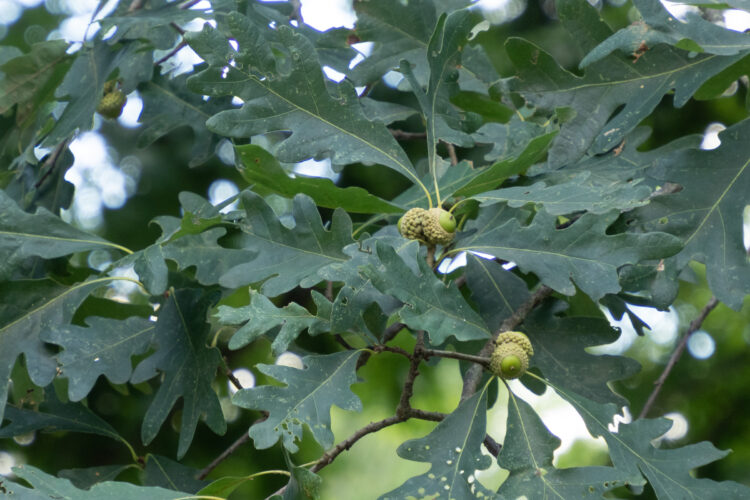
White oak with acorns. August 18, 2021, Pickaway County.
Bark. The light gray fissured and scaly bark is also diagnostic.

White oak has light gray bark.
Oak trees, especially those in the white oak group, have a wide sillhouette.

White oak tree in a meadow.
In the winter. Oaks have clustered end buds. Members of the white oak group are blunt, not sharp-pointed (similar to their leaves).
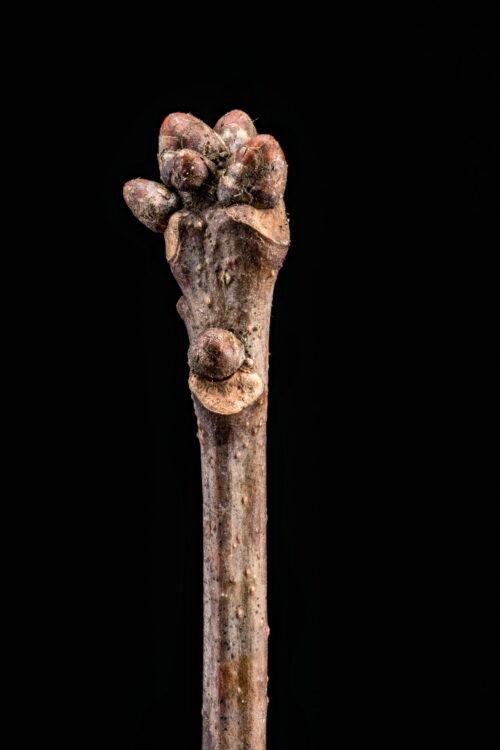
Oaks have clustered end buds.
Where to find white oak. E. Lucy Braun, in The Woody Plants of Ohio (1961, 1989; The Ohio State University Press) tell us that this species is “A large and valuable forest tree of the eastern half of the United States and southern Canada, occurring almost throughout the deciduous forest. Probably present in all counties of Ohio. Found in a variey of habitats: mesic woods, wet flats, dry hillsides. Formerly an abundant tree of the Illinoian Till Plain (“flats”) of southwestern Ohio, where trees 3-4.5 ft. D.B.H. were frequent.”
Scanned Drawing from an Old Book
Flora of West Virginia, by P.D. Strausbaugh and E.L. Core
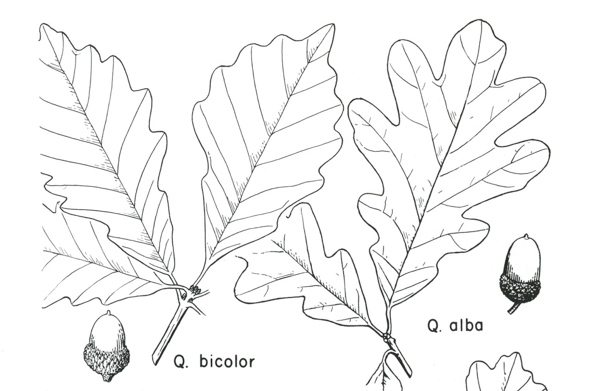
White oak is on the right.
Ooh, ooh! I have a question!
What are the two taxonomic groups of oaks, and how are they distinguished leaf-wise, and fruit-wise?
Members of the WHITE OAK GROUP have leaves that are bluntly lobed, have acorns that mature in one season, and are generally sweet (or at least not very bitter) and the inside of their shell is glabrous (hairless).The bur oak (Quercus macrocarpa) shown below is in the white oak group.
Conversely, members of the RED OAK GROUP have bristle-tipped lobes, acorns that take two years to mature which are quite bitter owing to the presence of tannic acid and and have a hairy inner shell lining.

